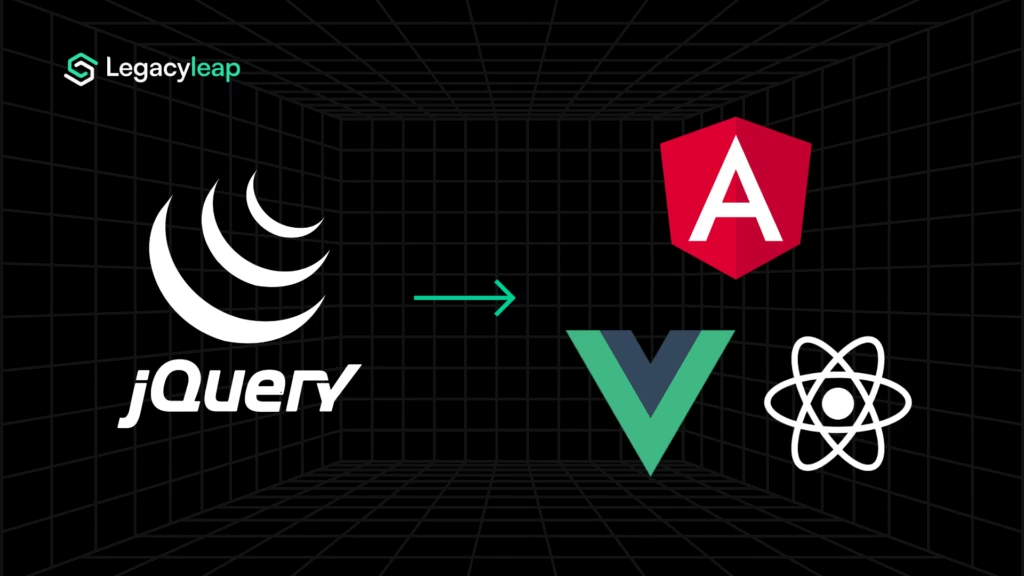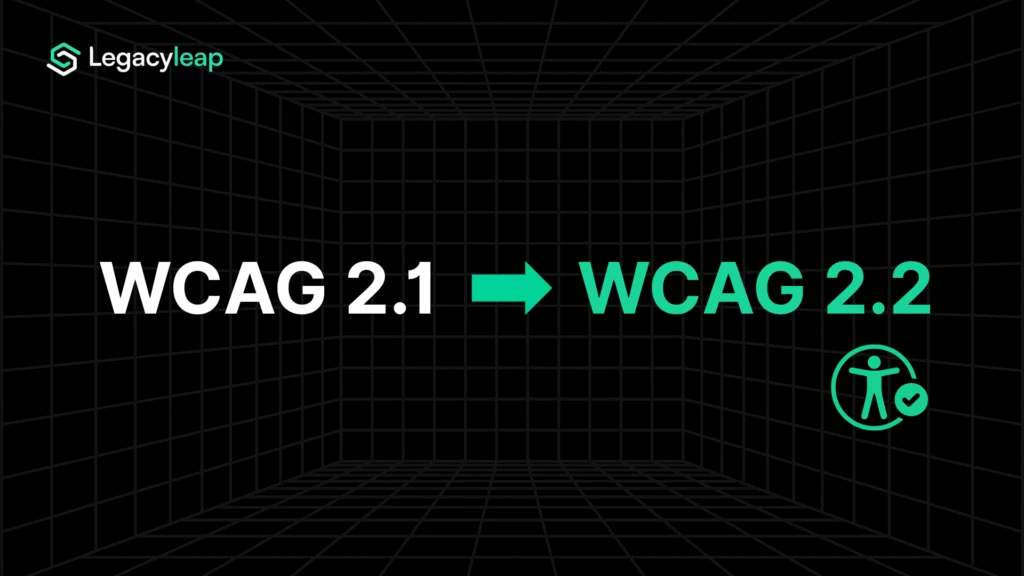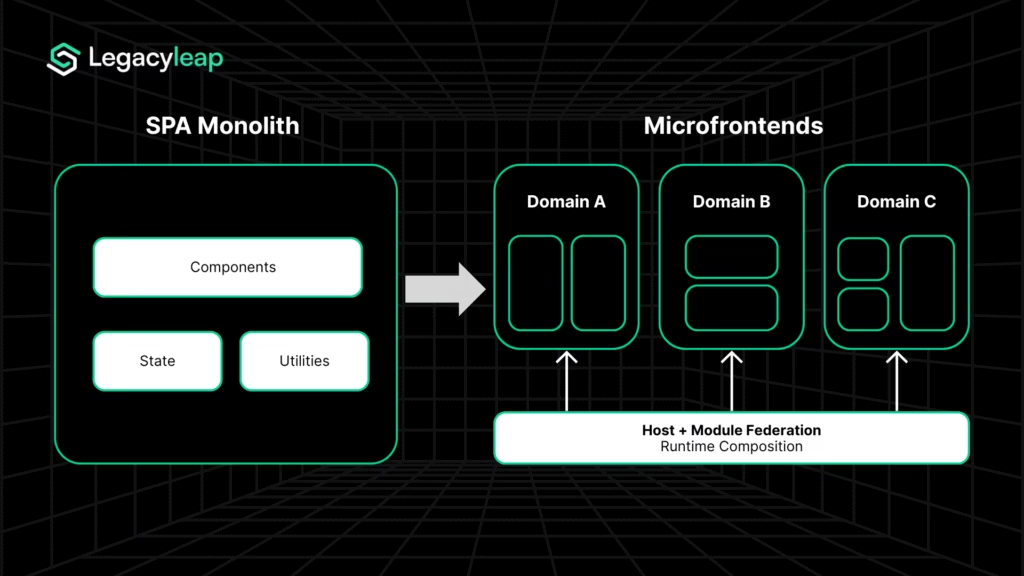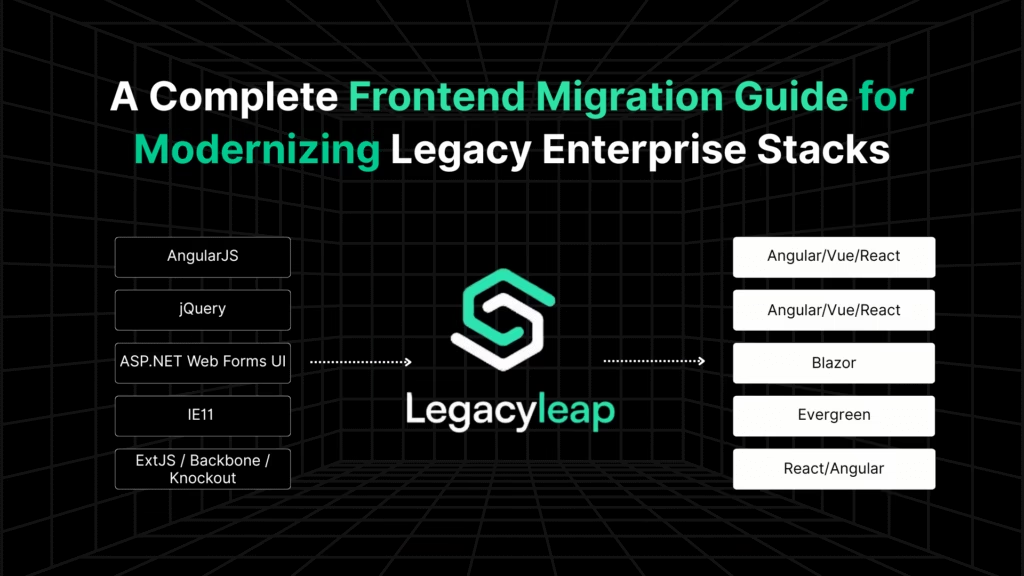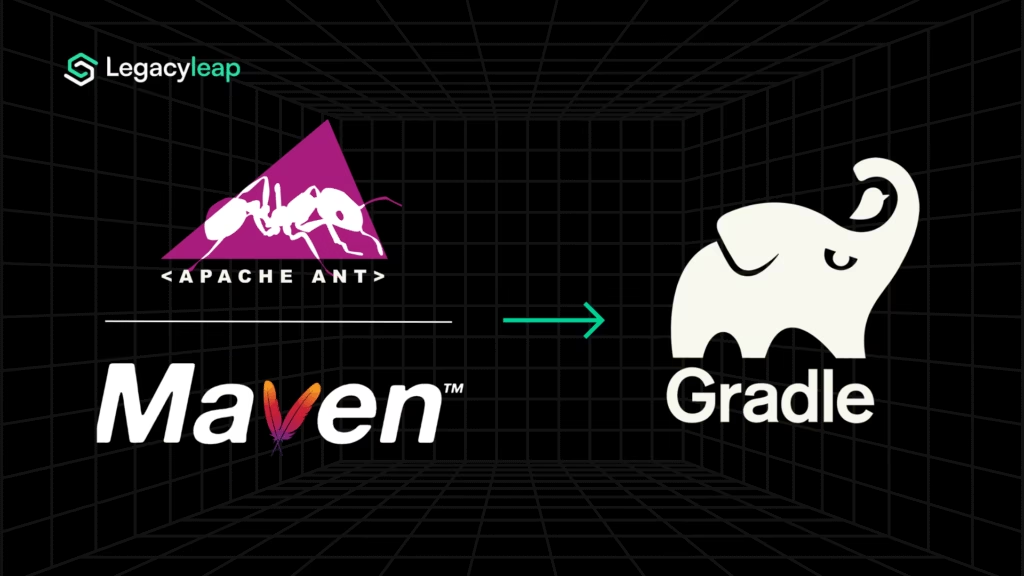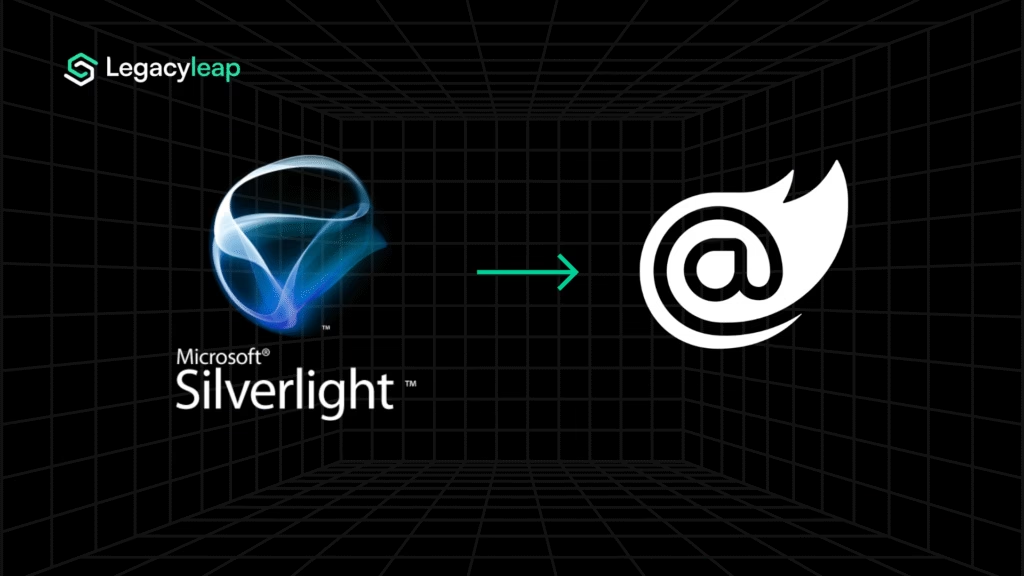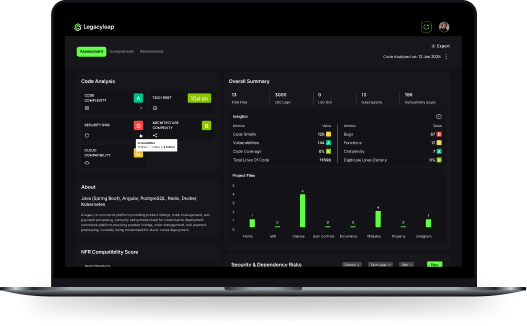What Enterprise-Ready Gen AI Modernization Really Means
Enterprise leaders already believe in the potential of AI. What they need now is a Gen AI modernization platform that is enterprise-ready, secure, scalable, and fully within their control.
That’s where most Gen AI tooling begins to break down.
It’s one thing to build a smart assistant. It’s another to build a system that can safely operate across millions of lines of legacy code, within strict data boundaries, inside a complex enterprise landscape. Most AI tools weren’t built for that. They were built for individual productivity.
At Legacyleap, we took a different path. From day one, the platform was designed for enterprise constraints:
- Modernizing massive codebases
- Running within the customer’s cloud perimeter
- Preserving control over what’s generated, stored, and learned
In this piece, we break down what “enterprise-ready” actually means when it comes to Gen AI and how architecture, deployment, and governance shape the platform’s ability to deliver.
Scaling Gen AI for Legacy Codebases in Complex Enterprises
Gen AI modernization at an enterprise scale is not just about performance. It requires architectural integrity and the ability to process massive legacy codebases with consistency and system-wide accuracy. Most Gen AI tooling is built to handle small, stateless requests: answer a prompt, generate a block of code, summarize a file.
But those paradigms don’t hold when you’re working with millions of lines spread across systems that were never designed to be modular.
At Legacyleap, scalability was never treated as an afterthought. It was a first principle.
That’s why the platform was designed with three distinct internal representations of code — control flow, architecture, and business logic — each stored in separate data layers. This multi-model design allows Legacyleap to maintain structural fidelity, support cross-cutting analysis, and operate with consistency at scale.
This matters when you’re dealing with:
- Massive, monolithic systems with decades of accumulated logic
- Deep interdependencies across services, functions, and data pipelines
- Transformations that can’t rely on shallow pattern recognition alone
Scalability, in this context, doesn’t just mean speed. It means being able to understand the system as it is, and still deliver safe, explainable transformation at the architectural level.
Summary:
Scalability in Gen AI modernization means going beyond prompt outputs. It requires a deep, structured understanding of the entire codebase across multiple layers of logic and architecture.
Also Check: Why AI Coding Tools Can’t Handle Legacy App Modernization
Ensuring Security, Control, and Cloud Compliance with Gen AI
Security, control, and cloud compliance are non-negotiable in enterprise-scale Gen AI modernization. Any platform that lacks in these areas puts sensitive systems at risk.
No matter how powerful a Gen AI platform is, it’s irrelevant if it introduces new vectors of risk, data leakage, or governance ambiguity. Most LLM-based tools, especially those modeled on SaaS workflows, don’t meet this bar.
Legacyleap was designed to operate entirely within the customer’s cloud environment, with no external API calls, no outbound data transfers, and no model-level learning that leaks across clients.
This architecture ensures:
- Data remains within enterprise boundaries, including source code, artifacts, transformation logic, and intermediate states
- Nothing leaves the system perimeter unless explicitly configured to do so
- Generated intelligence is fully owned by the enterprise, with no shared learning across tenants or environments
Security, in this context, focuses more on preserving control over where the platform runs, how it behaves, and what it does with enterprise IP. This is, of course, in addition to encryption, cloud compliance, and the like.
That control extends into platform operations as well. Every generation step is auditable. Every transformation path is traceable. Every artifact can be reviewed before it’s acted upon.
For a deeper dive into how we handle security within GenAI pipelines, read our guide on secure AI-driven application modernization.
This is what gives enterprise leaders the confidence to modernize without compromise.
Because when transformation happens securely, predictably, and under your control within your own walls, the risk posture shifts dramatically.
Summary:
Security and control in Gen AI modernization are achieved when the platform runs entirely within the enterprise perimeter. Legacyleap provides traceability, auditability, and full IP ownership.
How Gen AI Modernization Builds Confidence for Enterprise Leaders
Gen AI modernization is not held back by a lack of belief in its value. It is delayed because enterprise leaders need explainability, auditability, and full control before transforming complex legacy systems. It’s delayed because the systems involved are too complex, too undocumented, and too high-risk to change without absolute clarity.
That’s what enterprise-ready Gen AI has to solve for.
With Legacyleap, that clarity comes from the architecture itself:
- You know where the platform runs.
- You know how it transforms your systems.
- You know what’s generated, where it’s stored, and how it can be validated.
It’s no longer a leap of faith but a structured, explainable, and reversible path forward.
This reframes the modernization decision entirely. Leaders don’t need to commit to full-system transformation upfront. They can start small with a system that matters, a codebase that’s opaque, and a pilot that surfaces clear outcomes.
And they can do it within their cloud, under their governance, without exposing sensitive logic or introducing new risk.
Our $0 assessment is built to surface intelligence from that first system as the first real step toward modernization that’s safe, scoped, and grounded in your environment. It’s how you de-risk the decision, with clarity you can act on when you’re ready.
That’s where we start. And you can too, with a risk-free, zero-obligation $0 assessment designed to show you exactly what’s possible.
The message, then, isn’t just that GenAI works. It’s that the platform is ready. Ready to operate at enterprise scale. Ready to work within enterprise constraints.
And ready to help leaders modernize with clarity, not compromise.
If you’re exploring strategy, architecture, and risk reduction across modernization phases, read how we can help you build a robust application modernization roadmap to see how Gen AI fits into an enterprise-wide plan.
FAQs
Enterprise-readiness goes beyond model access. A true Gen AI platform must offer explainability, deterministic behavior, integration into enterprise workflows, and the ability to run securely in client environments. It should handle large-scale systems with guardrails, governance, and team-wide collaboration, and not just assist individual developers with prompt-based suggestions.
Not by default but it can be. Generic Gen AI tools often hallucinate or lack architectural awareness. Legacyleap mitigates this by grounding all AI output in compiler-verified representations and structured code graphs. Human-in-the-loop checkpoints ensure nothing is applied blindly, making Gen AI both safe and production-grade for legacy transformation.
Yes, if paired with the right scaffolding. Legacyleap uses graph-powered comprehension and intermediate representations (like MLIR) to map undocumented logic, dependencies, and business workflows. This enables Gen AI to work at system scale, transforming even massive, undocumented VB6 or Java applications with confidence and accuracy.
Public LLMs can pose risks around data leakage, unpredictability, and lack of context. They weren’t built for secure enterprise transformation. Legacyleap avoids these risks by running entirely within the client’s infrastructure and offering full control over which models are used, whether OpenAI, Azure-hosted, or private deployments.
Legacyleap enforces strict security and privacy boundaries through deployment isolation, role-based access, audit logs, and model-level data controls. Its AI middleware ensures only relevant code is exposed to Gen AI agents, and no data is reused across clients. The platform also supports SOC 2 and HIPAA-aligned configurations.



